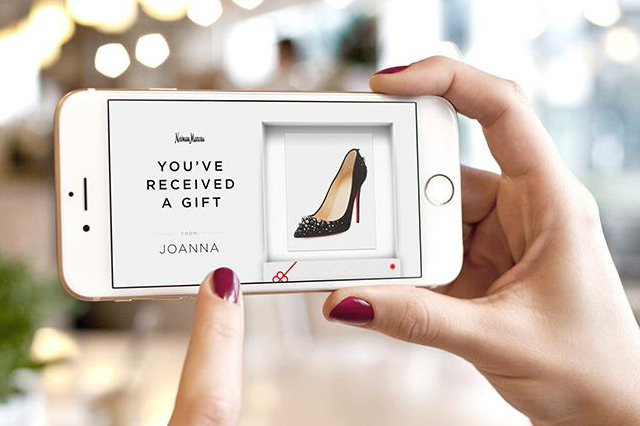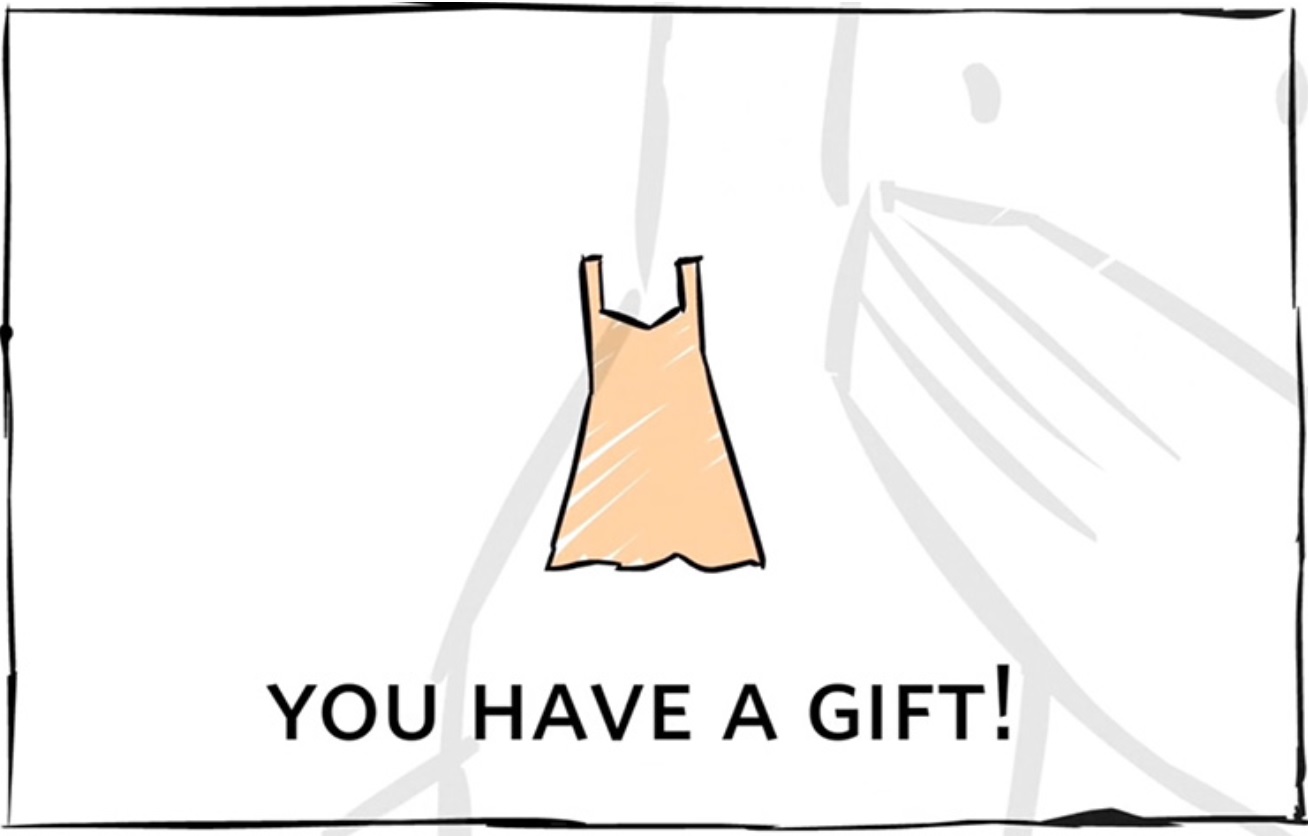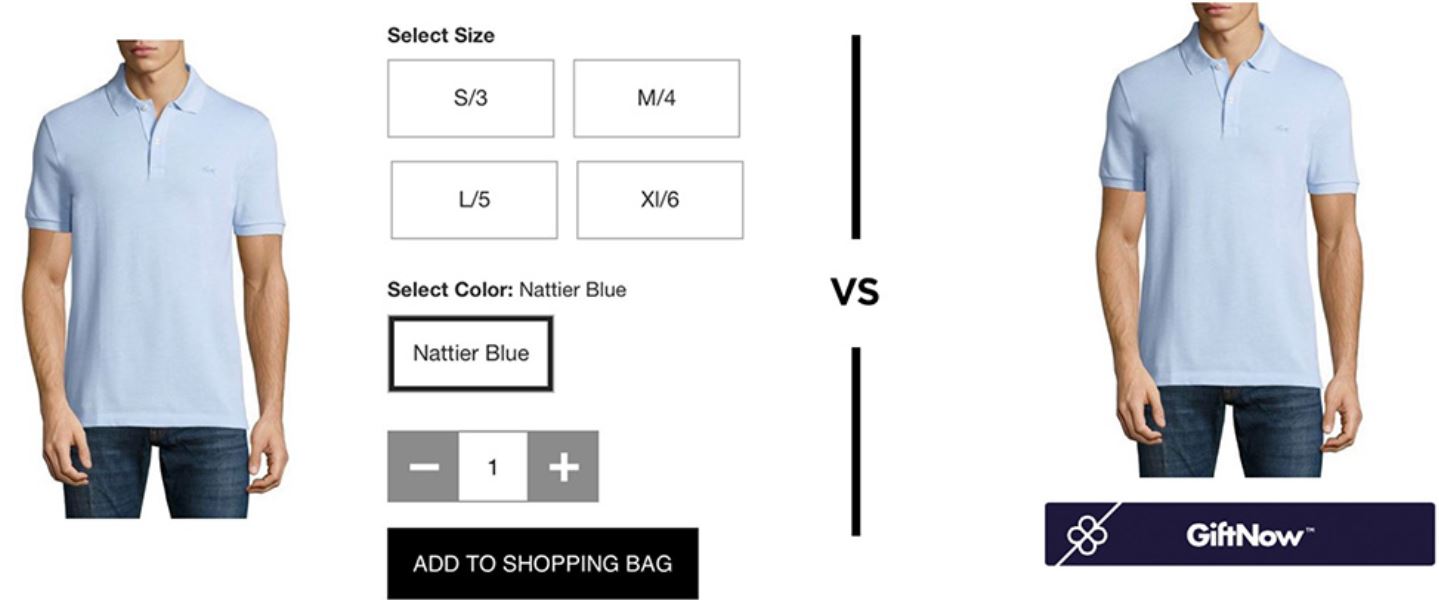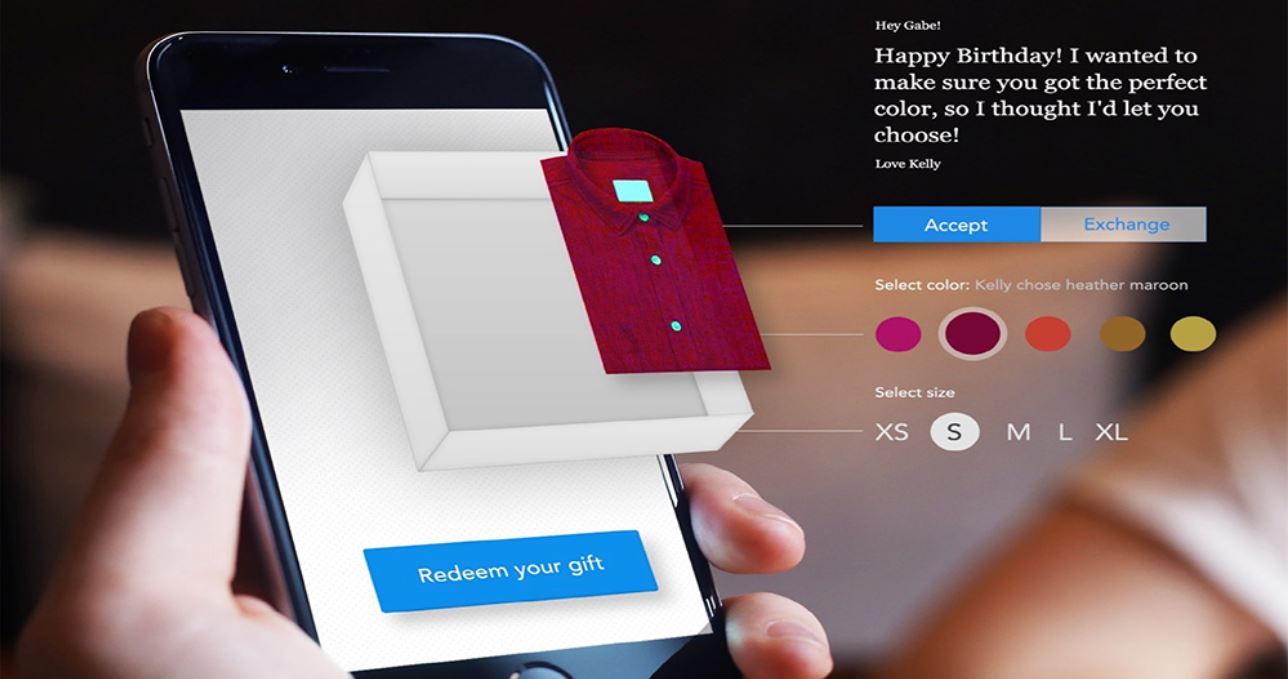
Web Developers
Loop Commerce is changing the landscape of the online gift-buying and receiving experience, creating new opportunities and leading the way to a $200–$300 billion gifting market, which is estimated to be worth up to a half a trillion dollars more per year when gift cards are included.





 Gift cards solve many of the challenges Loop solves on paper, with the main difference that Loop lets shoppers give a gift, rather than money for the recipient to buy something for themselves, which takes away much of the thoughtfulness, and again, mirrors more closely the traditional and the ancient act of giving a gift. While widely adopted by consumers, industry research shows that significant numbers of consumers either won’t consider gift cards a viable gift, or will only do so reluctantly and only for a few occasions. The idea is that these millions of shoppers want their gift be a real item that shows they have put thought into the selection, rather than focusing on the ‘price tag’ (as with a gift card). Not unlike our intuition and social norm to remove the price tag before hand delivering a gift. Effectively, giving a price tag as a gift takes away from the social engagement and makes it very transactional. Good for some consumers and occasions, but unacceptable by many others.
Studies have shown that gifting is emotional and social, rather than transactional. Loop Commerce wants to bring the happiness and thoughtfulness back into gifting, which will then also benefit the industry as it ties directly into sales and dollars. People can now buy things they previously did not think of as giftable items. As for wish lists, it became a necessity with how commerce is structured, but neither buyers nor receivers really enjoy the process because there is barely any excitement when receiving a gift—the receiver already knows what the present will be. Gift cards and wish lists are still large categories and a necessity because this is how gifting has been offered for a couple of decades, and we’re not suggesting to replace them, but rather evolve and grow gifting with more use cases.
Another factor to note as a difference is that many gift cards go unused. But through Loop, most recipients redeem their gift almost immediately. It’s the difference between accepting money and think about what to get eventually, and being asked to accept an actual gift. Even if they want to exchange it, the process is still immediate.
Gift cards solve many of the challenges Loop solves on paper, with the main difference that Loop lets shoppers give a gift, rather than money for the recipient to buy something for themselves, which takes away much of the thoughtfulness, and again, mirrors more closely the traditional and the ancient act of giving a gift. While widely adopted by consumers, industry research shows that significant numbers of consumers either won’t consider gift cards a viable gift, or will only do so reluctantly and only for a few occasions. The idea is that these millions of shoppers want their gift be a real item that shows they have put thought into the selection, rather than focusing on the ‘price tag’ (as with a gift card). Not unlike our intuition and social norm to remove the price tag before hand delivering a gift. Effectively, giving a price tag as a gift takes away from the social engagement and makes it very transactional. Good for some consumers and occasions, but unacceptable by many others.
Studies have shown that gifting is emotional and social, rather than transactional. Loop Commerce wants to bring the happiness and thoughtfulness back into gifting, which will then also benefit the industry as it ties directly into sales and dollars. People can now buy things they previously did not think of as giftable items. As for wish lists, it became a necessity with how commerce is structured, but neither buyers nor receivers really enjoy the process because there is barely any excitement when receiving a gift—the receiver already knows what the present will be. Gift cards and wish lists are still large categories and a necessity because this is how gifting has been offered for a couple of decades, and we’re not suggesting to replace them, but rather evolve and grow gifting with more use cases.
Another factor to note as a difference is that many gift cards go unused. But through Loop, most recipients redeem their gift almost immediately. It’s the difference between accepting money and think about what to get eventually, and being asked to accept an actual gift. Even if they want to exchange it, the process is still immediate.

 adding a greeting note. When a recipient sees the product that was gifted through Loop Commerce, the price is not shown. According to our data, more than 60% of gift recipients today accept the original gift without looking at the price—the recipient is looking only at the shirt, and the colors and sizes available. The next step is to enter the shipping information. The recipient is also given the option to exchange the item by getting a gift credit to buy something else in the store. And the recipient can choose an adding a greeting note. When a recipient sees the product that was gifted through Loop Commerce, the price is not shown. According to our data, more than 60% of gift recipients today accept the original gift without looking at the price—the recipient is looking only at the shirt, and the colors and sizes available. The next step is to enter the shipping information. The recipient is also given the option to exchange the item by getting a gift credit to buy something else in the store. And the recipient can choose an option to send a thank-you note. The buyer is not automatically informed as to what the recipient eventually chose to reduce friction and concern around the exchange experience.
adding a greeting note. When a recipient sees the product that was gifted through Loop Commerce, the price is not shown. According to our data, more than 60% of gift recipients today accept the original gift without looking at the price—the recipient is looking only at the shirt, and the colors and sizes available. The next step is to enter the shipping information. The recipient is also given the option to exchange the item by getting a gift credit to buy something else in the store. And the recipient can choose an adding a greeting note. When a recipient sees the product that was gifted through Loop Commerce, the price is not shown. According to our data, more than 60% of gift recipients today accept the original gift without looking at the price—the recipient is looking only at the shirt, and the colors and sizes available. The next step is to enter the shipping information. The recipient is also given the option to exchange the item by getting a gift credit to buy something else in the store. And the recipient can choose an option to send a thank-you note. The buyer is not automatically informed as to what the recipient eventually chose to reduce friction and concern around the exchange experience.





Source: Loop
Fung Global Retail & Technology had the opportunity to interview Roy Erez, Co-Founder and CEO of Loop Commerce. Loop’s solution is already used by many large retailers including Macy’s, Neiman Marcus, Saks Fifth Avenue, Coach, Bergdorf Goodman, Lancôme and others. Erez shared his insights about the gifting category and the emergence of what Loop defines as “g-commerce” (gift commerce).Q: Can you discuss the gifting industry?
It is interesting that gifting is still not viewed by many in the industry as a significant opportunity to be grabbed and that can move the needle. Aside of having a gift section (on occasion with capabilities such as gift wrapping and a gift receipt), gift cards and some form of wish-lists or registries, most retailers are not doing much. Online gifting of real products (not gift cards) is a $200–$300 billion opportunity for businesses. There are many more gifts that are being purchased than gift-cards. Over 20 gifts on average per consumer every year. But many retailers are not benefiting from this. Gift-commerce should be viewed as a category. We at Loop Commerce have coined the term “g-commerce” to refer to gift-commerce as we want the industry to think about and be aware of the opportunity. It’s actually larger the mobile-commerce and social-commerce combined.
Source: Shutterstock
Timing is one of the biggest challenges for retailers. For consumers shopping, in many cases it’s either too early or too late to deliver a gift on time. Retailers are unable to schedule a precise deliver date of an item weeks ahead. And last minute is problematic with their cut-off times. The notion of separating delivery and shipping does not exist today. When it comes to gifting, in most cases, and especially when it comes to last minute gifting needs, consumers really need their gifts ‘delivered’ on time, and not necessarily ‘shipped’. Loop Commerce delivers real gifts digitally, which means we are able to accommodate instant delivery, anywhere, anytime. And without the crazy shipping costs associated with urgent shipping. Buyers end up with the advantage of giving a thoughtful ‘real’ gift, and avoiding the perception that it was actually purchased at the last minute. Recipients enjoy having their gift delivered on time, and are able to accept or exchange it, and even thank the buyer for it. In addition to last minute, Loop allows customers to plan ahead and schedule their delivery. Customers are able to schedule delivery of a gift up to a year in advance. Responding to these two previously prohibitive gifting needs around the timing (too early or too late) opens up new possibilities for consumers and for retailers. Our data have shown that more than 40% of gifts are bought as last minute (after the traditional shipping cut-off time retailers have) on the day of or the day before a special occasion because people either procrastinated or forgot to buy gifts. 30% of all gifts are being scheduled in advance.Q: How can retailers benefit from Loop Commerce’s approach to gifting?
The top two issues retailers face are a shrinking customer base and fewer transactions per customer, which result in fewer sales. Loop Commerce helps retailers grow their business, customer base and number of transactions, while increasing the profit margins for these purchases (by reducing or eliminating exchange costs). First, as discussed, it opens up the ability for new use cases for the retailers, such as the ability to buy gifts online at the very last moment, or schedule it well in advance of the occasion. It also opens up new audiences for the retailer to target. For example, we’re seeing many more male gift shoppers purchasing through our system in stores that traditionally are more skewed with woman shoppers; or driving more millennial consumers to the stores as these consumers tend to seek new and better experiences as well as value immediacy. Customer Acquisition - when retailers deliver gifts through Loop‘s service, they acquire new customers – those customers Loop converted thanks to our dedicated gifting checkout (customers that otherwise would have abandoned the store without a purchase), and the gift recipients that are directed to the online store to accept their gift, become new customers, and are engaging with a brand they may have not previously heard of. On average our retail customers are seeing over 100 new customers, and in cases even 170 new customers engaged and filed - for every 100 gift transactions. Loop then offers invaluable data and insights to our retail customers, around product and users. These are used towards better managing marketing activities and programs, merchandizing, inventory management and more. Loop’s network of top retailers help us provide even smarter analysis that benefits for the retailers, as well as best practices they can leverage. Another point is opening up new categories for the merchants, in respect to what products they can offer as gifts. For example, we looked at our data for Father’s Day and saw that shoes became a top category to gift. This was interesting, as shoes were previously not a popular item to give because the buyer does not always know the shoe size of the recipient. Now, thanks to our service, shoes are in the giftable category. This suggests that, when risk is reduced, categories can become giftable even if they were once considered off limits in terms of gifts.
Q: How does Loop Commerce integrate itself into a client’s platform with zero integration?
With $20 million invested in R&D and years of experience being live with large retailers, we developed, evolved and optimized our unique and sophisticated technology that allows Loop to support and integrate with the largest enterprise retailers in the industry, with no effort on their end. We are today onboarding any retailer, seamlessly and without limitations related to their existing infrastructure and processes, within less than 4 weeks, and with zero integration. We provide a JavaScript for the retailer to embed within their product pages. The JavaScript invokes the call-to-action button on the product page. From there on, Loop’s platform takes care of all the heavy lifting and provide a full end-to-end service, integration and support – from the buying, digital delivery, payments and fraud management, messaging, and handing of the many edge cases required to support (such as changes to pricing or inventory) etc.Q: How does the business relationship between Loop Commerce and the retailer work?
To simplify the onboarding process, our model is based on success. We get paid only when we drive value, which is when a gift transaction occurs through our system. We receive a certain percentage of that transaction. Every transaction through Loop Commerce adds incremental sales and new customers, as well as helps retailers increase profit margins by reducing exchanges and return costs. Because Loop adds measurable benefits to conversion and customer acquisitions, and with our unique expertise and network of top retailers, our clients view Loop a partner that is aligned and incentivized to help them grow.
Source: Shutterstock
Q: Can you explain the difference between the industry’s approach to gift purchasing and Loop Commerce’s approach?
The industry’s approach to gift purchasing is either to buy a gift card, or buy a product using the “Add to Cart” button. Gifts cards are only a small subset of gift purchases, and this leaves money on the table by not accommodating those consumers who are not looking to give money as a gift. The traditional “Add to Cart” checkout is very limiting – it requires a SKU, which translates to the need to know attributes such as color and size of the product being ordered; it requires a shipping address (let’s be honest, how many people have this handy); and it requires to adhere to the supply chain and shipping constrains of the retailer, which by definition misses the mark of the huge market of last minute gift shoppers. Loop Commerce reinvented this flow of purchasing a gift because we believe that consumers and retailers alike should not be limited in use cases by the existing infrastructure’s constraints. Loop Commerce provides a dedicated gifting call-to-action that is usually placed next to delivered on-time.
Q: What makes Loop Commerce’s process of gifting different from wish lists and gift cards?
Wish lists and registries are typically used by consumers only for a very few and specific occasions such as a weddings or baby showers, but haven’t been adopted widely for the vast majority of occasions. For example, you don’t typically see consumers using a wishlist for their birthdays year-round. We believe the reason is that gifting is a very traditional gesture that is deeply rooted into our culture and the customs around gifting (outside the very few occasions mentioned) include senders choosing the gift and surprising the recipient with it vs the recipient creating a list of gifts they would like the get. Loop’s solution mirrors this traditional way to buy gifts and does not require a change in tradition, as with wishlists. Not to mention the ability to adhere to impulse purchase gifting opportunities. Gift cards solve many of the challenges Loop solves on paper, with the main difference that Loop lets shoppers give a gift, rather than money for the recipient to buy something for themselves, which takes away much of the thoughtfulness, and again, mirrors more closely the traditional and the ancient act of giving a gift. While widely adopted by consumers, industry research shows that significant numbers of consumers either won’t consider gift cards a viable gift, or will only do so reluctantly and only for a few occasions. The idea is that these millions of shoppers want their gift be a real item that shows they have put thought into the selection, rather than focusing on the ‘price tag’ (as with a gift card). Not unlike our intuition and social norm to remove the price tag before hand delivering a gift. Effectively, giving a price tag as a gift takes away from the social engagement and makes it very transactional. Good for some consumers and occasions, but unacceptable by many others.
Studies have shown that gifting is emotional and social, rather than transactional. Loop Commerce wants to bring the happiness and thoughtfulness back into gifting, which will then also benefit the industry as it ties directly into sales and dollars. People can now buy things they previously did not think of as giftable items. As for wish lists, it became a necessity with how commerce is structured, but neither buyers nor receivers really enjoy the process because there is barely any excitement when receiving a gift—the receiver already knows what the present will be. Gift cards and wish lists are still large categories and a necessity because this is how gifting has been offered for a couple of decades, and we’re not suggesting to replace them, but rather evolve and grow gifting with more use cases.
Another factor to note as a difference is that many gift cards go unused. But through Loop, most recipients redeem their gift almost immediately. It’s the difference between accepting money and think about what to get eventually, and being asked to accept an actual gift. Even if they want to exchange it, the process is still immediate.
Gift cards solve many of the challenges Loop solves on paper, with the main difference that Loop lets shoppers give a gift, rather than money for the recipient to buy something for themselves, which takes away much of the thoughtfulness, and again, mirrors more closely the traditional and the ancient act of giving a gift. While widely adopted by consumers, industry research shows that significant numbers of consumers either won’t consider gift cards a viable gift, or will only do so reluctantly and only for a few occasions. The idea is that these millions of shoppers want their gift be a real item that shows they have put thought into the selection, rather than focusing on the ‘price tag’ (as with a gift card). Not unlike our intuition and social norm to remove the price tag before hand delivering a gift. Effectively, giving a price tag as a gift takes away from the social engagement and makes it very transactional. Good for some consumers and occasions, but unacceptable by many others.
Studies have shown that gifting is emotional and social, rather than transactional. Loop Commerce wants to bring the happiness and thoughtfulness back into gifting, which will then also benefit the industry as it ties directly into sales and dollars. People can now buy things they previously did not think of as giftable items. As for wish lists, it became a necessity with how commerce is structured, but neither buyers nor receivers really enjoy the process because there is barely any excitement when receiving a gift—the receiver already knows what the present will be. Gift cards and wish lists are still large categories and a necessity because this is how gifting has been offered for a couple of decades, and we’re not suggesting to replace them, but rather evolve and grow gifting with more use cases.
Another factor to note as a difference is that many gift cards go unused. But through Loop, most recipients redeem their gift almost immediately. It’s the difference between accepting money and think about what to get eventually, and being asked to accept an actual gift. Even if they want to exchange it, the process is still immediate.
Q: Are there other solutions that address similar problems and how is Loop different?
As mentioned, gift cards try and address similar problems in gifting, and are often marketed to consumer as “perfect gift”. Moreover, we see some gift card providers and services very recently start to offer more personalized gift card offerings, where the sender could send a gift card with a recommendation for a specific product. While on the very surface these services and the marketing around them seem similar to Loop’s, there are many critical differences when comparing the execution and the technology. One primary example – when giving a gift card, even with a picture of a very specific gift the sender had in mind, the recipient’s experience is vastly different – the buyer knows they are buying a gift card rather than a gift (and therefore not converting those that are not looking to buy a gift card); and recipients after all get a 16 digit code and are required to “buy the gift for themselves” – starting with seeing the full price tag as first interaction, manually adding the product to cart, checking out, and then paying using their gift card. Moreover, in many cases they are required to actually add money in order to cover shipping and taxes and other price differences that exist. It ends up being another gift card program (one can argue better or worse than a traditional gift card). Behavioral economics studies prove that this experience is perceived by users, both senders and recipients, as much closer to the gift card experience than a physical gift one. The importance of this is beyond a “better experience”, but rather as such it will mostly attract gift card shoppers and not catering to those shoppers not looking to buy a gift cards. Loop offers the only end-to-end gifting platform, which is live with multi-billion dollar retailers, that allows sending and accepting gifts with all the attributes and characteristics of a traditional gifts. The recipient sees their gift without a price tag, and can accept it with a couple of clicks by merely telling the system where to ship it. By following the gifting traditions and experiences, Loop’s is the only solution that appeals to gift (and not gift card) shoppers, and as such can capture and convert these significant segments of consumers, tapping into this huge market within g-commerce and driving significant business value for the retailer. We also have to support all the edge cases and complexities that come along with offering such an experience.
Source: Shutterstock
Q: Can you explain the difference between the physical and online experience of receiving a gift?
Loop Commerce’s idea is to move the point of experience and interaction of the gift from the physical to the digital. Consumers are already there in a gifting mindset, where immediacy is key, as well as an elevated experience for the recipient. Most retailers have difficulty making the physical experience thoughtful. Consumers often receive a simple cardboard box with plastic wrapping inside. In many cases even a gift receipt is not available, and the greeting and wrapping options are extremely rudimentary Loop Commerce makes the experience even more personal and thoughtful as barriers associate with physical fulfillment are lifted. Videos, pictures and animation can be added when the recipient opens their gift online as the first interaction point with the gift, and we are continuously working to improve and enhance capabilities around personalization and visualizations to elevate the experience. Receiving the actual box by mail becomes secondary to the thoughtfulness, excitement and experience of the digital gift delivery. Studies and experience (as well as the day to day social and digital services the surround us) have proven that with gifting, recipients feel the surprise and joy with the digital experience. They are able to accept or easily exchange their gifts without the hassle associated with physical exchanges. The key is to make sure the experience resembles and exceeds the surprise and excitement in getting an actual gift, rather than a gift-card.Q: Walk us through the process after a Loop e-gift is sent.
Consumers are shopping on one of our retail customers’ online store. On the product page, rather than using the “Add to Cart”, they click on the gifting button next to it. They are then exposed to an elegant and simple experience and checkout, still on the retailer’s site. They are then able to buy and deliver the item easily via an email, while adding a greeting note. When a recipient sees the product that was gifted through Loop Commerce, the price is not shown. According to our data, more than 60% of gift recipients today accept the original gift without looking at the price—the recipient is looking only at the shirt, and the colors and sizes available. The next step is to enter the shipping information. The recipient is also given the option to exchange the item by getting a gift credit to buy something else in the store. And the recipient can choose an adding a greeting note. When a recipient sees the product that was gifted through Loop Commerce, the price is not shown. According to our data, more than 60% of gift recipients today accept the original gift without looking at the price—the recipient is looking only at the shirt, and the colors and sizes available. The next step is to enter the shipping information. The recipient is also given the option to exchange the item by getting a gift credit to buy something else in the store. And the recipient can choose an option to send a thank-you note. The buyer is not automatically informed as to what the recipient eventually chose to reduce friction and concern around the exchange experience.
adding a greeting note. When a recipient sees the product that was gifted through Loop Commerce, the price is not shown. According to our data, more than 60% of gift recipients today accept the original gift without looking at the price—the recipient is looking only at the shirt, and the colors and sizes available. The next step is to enter the shipping information. The recipient is also given the option to exchange the item by getting a gift credit to buy something else in the store. And the recipient can choose an adding a greeting note. When a recipient sees the product that was gifted through Loop Commerce, the price is not shown. According to our data, more than 60% of gift recipients today accept the original gift without looking at the price—the recipient is looking only at the shirt, and the colors and sizes available. The next step is to enter the shipping information. The recipient is also given the option to exchange the item by getting a gift credit to buy something else in the store. And the recipient can choose an option to send a thank-you note. The buyer is not automatically informed as to what the recipient eventually chose to reduce friction and concern around the exchange experience.
Q: Does the receiver ever have to pay the shipping and handling costs and how do you figure out the shipping costs and tax?
We make sure that the buyer covers shipping and taxes because we never want the receiver to pay these. Making the recipient pay for anything when accepting a gift ruins the experience and expectations. Another big advantage over gift-cards (that do not typically accommodate for this). Loop Commerce is able to estimate taxes in a very sophisticated and patent pending way even when there is no shipping address, as per the rules of the stores. In estimating tax and shipping without the shipping address, we make sure that we adhere to each retailer’s logic, rules and wishes. We also have what is called a price guarantee built into the platform: if the buyer purchases a product during a promotion, it will not matter if the product is no longer on sale when the recipient receives the gift. We are able to process the transaction with the discounted price. Retailers’ systems do not have the capability to make these tax and shipping calculations, as they always require a specific SKU and shipping address. Loop’s solution is the only one on the market that can make these calculations at product, not SKU level, and does not require a full shipping address.
Source: Shutterstock
Q: How does Loop Commerce increase consumer education about the gifting service?
We help our retail clients with consumer awareness and education because we know retailers need some guidance on this front. It’s a paradigm shift not only for retailers, but for consumers as well. Consumers are now able to buy a shirt without a size, checkout without a shipping address or buy and deliver their gift across the country instantly. That’s a big deal and easy to understand. But consumers need to know it exists. An advantage Loop Commerce has is our unique network of top retailers on our platform and service. Similarly to services such as PayPal, or Buy Online Pickup in Store that are becoming more and more common across retailers, they are benefiting from each other with increasingly wide adoption of Loop’s gifting functionality. Retailers having the same gifting checkout platform creates awareness of our service and will better convert users. In addition, we have a very strong ecosystem of partnerships that are there to support retailers with additional consumer education and driving new customers. One example is with PayPal. During holiday seasons and several additional major gifting occasions, PayPal was able to support their retail partners that use Loop to drive consumers to their online store with last-minute gifting messaging. Not to mention, that consumer education is viral and evolving. When someone receives a gift through Loop, that person is exposed to the related brand, but also learns about the new gifting service that they offer.Q: About how many people make exchanges with Loop Commerce’s service?
About a third of gifts processed through Loop Commerce are exchanged. Out of the remaining two-thirds, about half of recipients accept the gift as-is and the other half changes it to a different size or color. This actually means that most gifts are effectively being accepted by the recipients. Which is great, especially when we see that 7 out of 10 of gifts delivered are what was previously considered as ‘hard to gift, risky items’. Take away the risk of sending these items, you’re left with a thoughtful gift that people want to take advantage of. In addition, Loop’s high redemption and speed rates add a big business benefit for retailers that can immediately recognize revenues on these transactions, which doesn’t happen with gift cards, many of which remain unredeemed and a liability on merchant’s books. We also have the ability and insights into consumer habits to become a source of value for retailers. This is a major service we provide to our retail partners, and one that will only evolve much more. It’s important to note that we are not jeopardizing the data in any way that retailers do not like; we offer them insights about the life cycle of customers, merchandize, and other behavioral insights into usage. Amazing that prior to this, if you asked retailers how many of their purchases are towards buying for others, most will not know. Nor do they have the visibility of the full cycle of the products once those are exchanged. We have all the data sets and insights on who, what, where and why consumers are purchasing, and the benchmarks cross merchants.
Q: Which categories have the most opportunity in e-gifting?
We are 100% cross-category because consumers buy gifts from any category and the friction and stress associated with gift buying is true for any category of products. It just so happens that we are mainly in apparel and department stores today because these retailers moved quickly with adoption, but letting shoppers buy without a shipping address or deliver a gift instantly cross country, is a value and opportunity for all categories, brands and merchants.Q: What was the most surprising information you discovered when looking at the data Loop Commerce has collected?
It’s interesting to observe and analyze the behavior. Some examples: Men are paying 27% more than women are for gifts, but women are buying more gifts. On Black Friday, people are shopping more for themselves, while on Cyber Monday, they started their Christmas shopping for others. Timing is super interesting as well. ~40% or so are purchasing gifts at the very last moment – the day of or day before the occasion. People just tend to procrastinate and forget. So at the time needed most, retailers are closed for gifting business due to their supply chain and shipping constraints. The flip side to that, with Loop consumers are able to schedule the delivery of their gift up to a year ahead. If we think about it, this capability does not exist today outside gift-cards. ~30% of gifts on our network are using scheduled delivery. Which accommodates another need for early gift shopping. Also, when launching the service we assumed that it will initially be adopted only by gifters sending remotely to distant relatives and that the majority of the gifts won’t be the more risky ones – as it takes time for consumers to learn that a shoe can now be gifted without the stress of knowing the size etc. We were surprised to see quite immediately transactions of husbands buying jewelry to wives and shoes and apparel being widely gifted. This only confirmed the very wide need in the service and the quick adoption curve for many consumers, once they become aware of this new service.
Source: Shutterstock
Q: Can you tell us about yourself and your background and how you came up with the concept of Loop Commerce?
My background spans between venture capital and later a few other start-ups prior to starting Loop. I founded Loop Commerce together with Alex Sirota about four years ago due to a personal experience of not being able to complete an online gift purchase for a friend because I did not have his shipping address. This experience made us realize that there is an assumption in the industry that the buyer is the consumer of the product and therefore has all the information needed. It evolved to analyzing the full complexity around shopping for others. I might love the brand and merchant, but can’t purchase there as I’m not certain of things like the style, size, shipping address, or just not being able to ship the gift on time. The only available solution offered to me is a gift card, and that is not an acceptable gift option for me (and many shoppers). I was not looking to give my friend cash, but rather a thoughtful gift. Essentially, retailers seem to either believe that there is only one consumer, or not care about the gift shoppers. Consumers purchase on average over 20 gifts every year across the different life events and occasions. At the same time retailers are hurting with decreasing number of customers and transactions per customer – we viewed this as an amazing opportunity to “fix” the industry around how retailers and consumers think about, and are able to buy and receive gifts online.Q: What are your next steps? Have you had any conversations with international retailers yet?
Loop offers the only end-to-end gifting platform that was built from the ground up to fit the complicated needs, infrastructure and processes of large-enterprise retailers, is live with multi-billion dollar retailers, and allows sending and accepting gifts with all the attributes and characteristics of a traditional gift. It’s an exciting time for us a technology start-up company from Silicon Valley that is at the forefront of innovation in commerce and gifting. We plan to continue and invest to make g-commerce a powerful category within commerce, and gifting a real business driver for merchants and ecosystem partners, especially at a time where the industry needs new ways to evolve and compete on consumers and business.